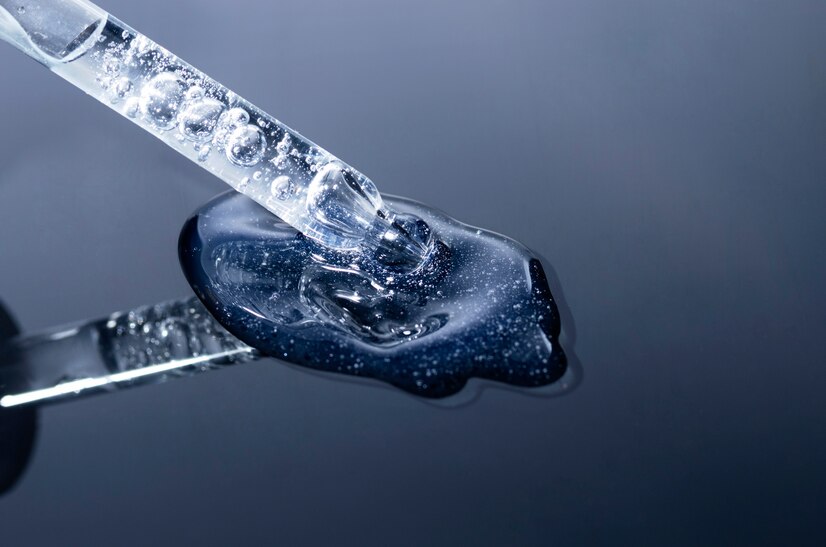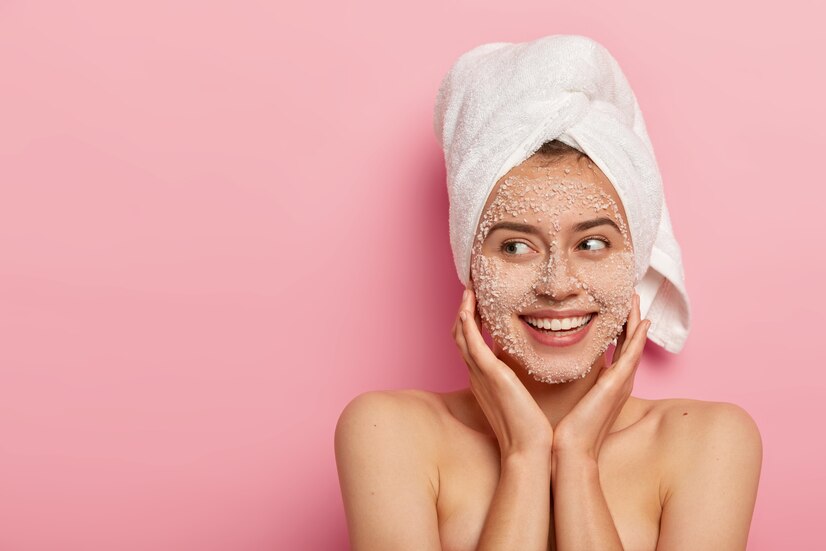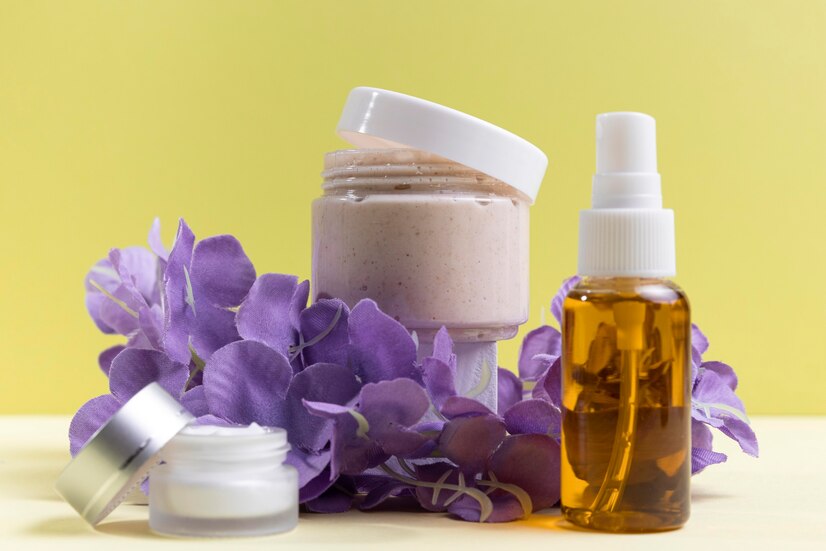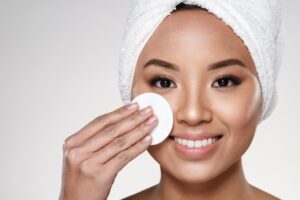Have you ever looked through a skincare product’s packaging and found the code “AHA” or “BHA”? If you’ve seen this and you feel lost about what it’s all about, then sit tight because I’m about to break it down for you.
These seemingly mysterious terms are key players in the world of chemical exfoliation, but interestingly, beneath the scientific jargon lies a simple concept—a concept about helping your skin look its best!
So, let’s break it all down and see what AHAs and BHAs really mean.

What are AHAS and BHAS
These are both types of acids used in skincare products, although they belong to different chemical families: alpha hydroxy acids (AHAs) and beta hydroxy acids (BHAs).
AHAs are water-soluble, meaning they work on the surface of your skin. Examples are glycolic acid, which is derived from sugar cane, and lactic acid, which is found in milk.
These acids help loosen the bonds between dead skin cells, allowing them to shed more easily. Consequently, this can result in smoother, brighter skin with a more even tone. AHAs also have anti-aging benefits, as they can help reduce the appearance of fine lines and wrinkles.
BHAs, on the other hand, are oil-soluble, which allows them to penetrate deeper into pores and work actively. They are also known for their anti-inflammatory properties, making them a good choice for acne-prone skin.
A common example of BHAs is salicylic acid, which is great at tackling clogged pores and blemishes. It can also help dissolve sebum, which is oil in your skin, and dead skin cells that can lead to blackheads and whiteheads.
In simple terms, think of AHAs as surface cleaners, clearing away surface debris like dead skin cells. BHAs, on the other hand, are more like unclogging your skin’s pores, giving it a deeper cleanse and preventing congestion.
Exfoliating Acids and How They Work
Our skin is constantly in a state of renewal. New cells are born deep within, pushing their way up to the surface, while older cells eventually die and flake off. But sometimes, this natural process can get sluggish, leaving us with a dull, rough complexion. And that’s where exfoliation comes in.
Exfoliation is like giving your skin a gentle nudge to shed dead cells and reveal the fresh, radiant layer beneath. This process can be classified into two major types: physical exfoliation and chemical exfoliation.
Many people are familiar with physical exfoliation, which involves using scrubs to buff away dead skin. While this process can be effective, it can sometimes be too harsh, especially for sensitive skin.

Chemical exfoliation, on the other hand, takes a more subtle approach. As we discussed earlier, it utilizes acids, basically AHAs and BHAs to dissolve the glue-like substance holding dead skin cells together, allowing them to detach and be gently washed away. Consequently revealing a smoother and brighter surface.
Some examples of chemical exfoliants are glycolic acid, which is considered the most effective of them all, particularly because of its ability to improve complexion and even out the skin texture; Lactic acid, which gives a gentler approach to exfoliation and is perfect for sensitive skin; Salicylic acid, with its anti-inflammatory and oil-dissolving properties; and, lastly, Mandelic Acid.
Mandelic acid is derived from almonds and can be quite helpful for hyperpigmentation. However, it is larger in size than other AHAs, making it penetrate the skin more slowly, and this translates to a milder exfoliation process,
So, how exactly do chemical exfoliants help achieve clearer and brighter skin? Let’s explore some more.
Targeting Specific Skin Concerns with Aha and Bha
Eliminate dullness
Dead skin cells act like a veil, obscuring your skin’s natural radiance. Chemical exfoliation removes this layer, loosens the flakes of dead skin cells, and reveals the fresh and healthy cells beneath. This can make your skin appear brighter and more luminous.
Open up Pores
Pores often get clogged with dead skin cells and sebum, leading to a bumpy appearance, so chemical exfoliation, particularly with BHAs, can help keep pores clear, minimizing their visibility.
Unlike AHAs, which work on the surface, BHAs dive deep down into your pores, dissolving sebum and dead skin cells and keeping your skin clear.

Sun Protection
If you’re feeling like your skin looks a little lackluster and uneven, then AHAs could be just what you need. As we age, our skin cell turnover slows down, leading to a buildup of dead skin cells on the surface.
AHAs, being gentle resurfacing agents, can help sweep away these dead cells, revealing the brighter, smoother skin underneath.
Glycolic acid is a popular AHA that is particularly effective at tackling sun damage. It can help fade sunspots and hyperpigmentation, giving your skin an even tone. Lactic acid is another common AHA, and is a good choice for those with sensitive skin as it’s generally more gentle than glycolic acid.
Reduce the appearance of wrinkles
AHA’s can stimulate cell turnover, which can help reduce the appearance of fine lines and wrinkles. By promoting collagen production, they also contribute to a plumper and more youthful look.
Gets rid of hyperpigmentation
We already know that AHAs help remove dead skin cells on the surface, and this makes them especially important for hyperpigmentation. This is because melanin, the pigment that gives skin its color, can get trapped in these dead cells.
So, gently buffing away the top layer, AHAs can help reveal the newer, brighter skin underneath, leading to a more even tone.
How to Incorporate Ahas and Bhas Into your SkinCare Routine for Best Results
The beauty of AHAs and BHAs is that they can be a match made in heaven, depending on your needs.
These chemical exfoliants can complement each other beautifully in a skincare routine, although it’s always best to introduce them one at a time to see how your skin reacts.
For instance, if you have oily skin prone to breakouts but struggle with dullness, you could incorporate a BHA cleanser in the morning to tackle oiliness and a gentle AHA lotion at night to promote cell turnover.
Remember to start slow, introducing one product at a time and monitoring how your skin reacts. You can do a patch test on a small, inconspicuous area to see how your body will react to the product.
But here’s a crucial point: AHAs and BHAs can make your skin more sensitive to the sun. So, sunscreen becomes essential in your routine. Apply a broad-spectrum SPF 30 or higher daily to shield your skin from harmful UV rays.
C
Conclusion
Chemical exfoliants can be a helpful addition to your skincare collection. However, not all acids are created equal. Some are gentler and suitable for daily use, while others are more potent and require a more cautious approach. So, the key is to find what works best for your skin type and specific concerns.
By understanding how AHAs and BHAs target specific skin concerns, you can create a personalized skincare routine that addresses your unique needs. So, experiment, be patient, and most importantly, enjoy the journey of creating a skincare routine that works for you!











